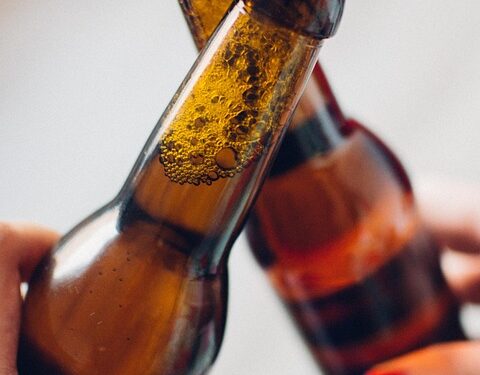Mastering the Art of Clean: The Ultimate Guide to Beer Brewing Sanitizers
When it comes to brewing beer at home, cleanliness is key. The last thing you want is for your delicious brew to be contaminated by bacteria or other unwanted organisms. That’s where beer brewing sanitizers come in. In this comprehensive guide, we will take a closer look at the different types of sanitizers available, how to use them effectively, and tips for mastering the art of clean brewing.
Why Sanitizing is Important
Before we dive into the specifics of beer brewing sanitizers, let’s first discuss why sanitizing is so crucial in the brewing process. When brewing beer, you are essentially creating an environment where yeast can thrive and ferment sugars into alcohol. However, this environment is also ideal for bacteria, wild yeast, and other microorganisms to grow.
If your brewing equipment is not properly sanitized, these unwanted organisms can contaminate your beer, leading to off-flavors, infections, and potentially ruining your batch. By using a good quality sanitizer, you can ensure that your equipment is free from any harmful bacteria, giving your yeast the best chance to do its job and create a delicious brew.
Types of Beer Brewing Sanitizers
There are several different types of sanitizers available for home brewers, each with its own advantages and disadvantages. Here are some of the most common types:
1. Iodophor
Iodophor is a popular sanitizer among home brewers due to its effectiveness and ease of use. It is a no-rinse sanitizer, meaning that you can simply soak your equipment in the solution and then use it immediately without having to rinse it off. Iodophor is also relatively inexpensive and readily available at most homebrew supply stores.
2. Star San
Star San is another popular no-rinse sanitizer that is commonly used by home brewers. It is a phosphoric acid-based sanitizer that is highly effective at killing bacteria and other microorganisms. Star San is also non-toxic and environmentally friendly, making it a great choice for those who are conscious of the impact of their brewing practices on the environment.
3. Bleach
While bleach is not as commonly used as iodophor or Star San, it is still a viable option for sanitizing brewing equipment. Bleach is a powerful sanitizer that is effective at killing bacteria and other microorganisms. However, it is important to note that bleach can leave a residue on your equipment if not rinsed thoroughly, so be sure to rinse your equipment well after sanitizing with bleach.
How to Use Beer Brewing Sanitizers
Now that you know the different types of sanitizers available, let’s discuss how to use them effectively. Here are some general tips for sanitizing your brewing equipment:
1. Follow the manufacturer’s instructions
It is important to carefully read and follow the manufacturer’s instructions for the sanitizer you are using. Different sanitizers may have different dilution ratios and contact times, so be sure to follow the instructions to ensure that your equipment is properly sanitized.
2. Use the right concentration
When mixing your sanitizer solution, be sure to use the correct concentration. Using too little sanitizer may not effectively kill all of the bacteria and other microorganisms on your equipment, while using too much may leave a residue that can affect the flavor of your beer.
3. Allow for proper contact time
Most sanitizers require a certain amount of contact time to effectively kill bacteria and other microorganisms. Be sure to allow your equipment to soak in the sanitizer for the recommended amount of time to ensure that it is properly sanitized.
Tips for Mastering the Art of Clean Brewing
Now that you know the importance of sanitizing and how to use sanitizers effectively, here are some additional tips for mastering the art of clean brewing:
1. Clean as you go
One of the best ways to ensure that your equipment stays clean is to clean it as you go. After each brewing session, take the time to thoroughly clean and sanitize your equipment before storing it away. This will help prevent any bacteria or other microorganisms from growing on your equipment and contaminating your next batch of beer.
2. Inspect your equipment regularly
Be sure to regularly inspect your brewing equipment for any signs of wear or damage. Cracks, scratches, and other imperfections can harbor bacteria and other microorganisms, so it is important to replace any damaged equipment to ensure that your brews stay clean and free from contamination.
3. Store your equipment properly
After sanitizing your equipment, be sure to store it in a clean and dry environment. Wet or damp equipment can harbor bacteria and other microorganisms, so it is important to store your equipment properly to prevent contamination.
Conclusion
In conclusion, mastering the art of clean brewing is essential for producing delicious and high-quality beer. By using a good quality sanitizer and following proper sanitizing procedures, you can ensure that your equipment is free from harmful bacteria and other microorganisms, giving your yeast the best chance to create a delicious brew. By following the tips outlined in this guide, you can become a master of clean brewing and produce beer that is free from contamination and full of flavor.





